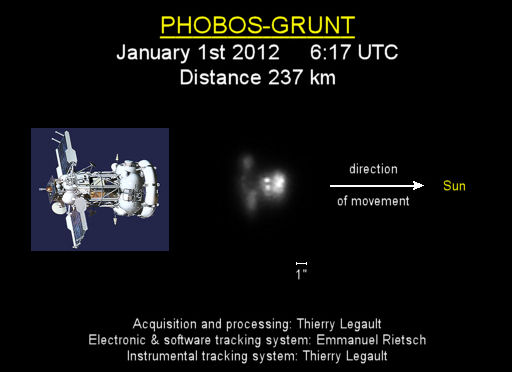http://spaceweather.com/Russia's Mars probe, Phobos-Grunt (
http://en.wikipedia.org/wiki/Fobos-Grunt), has been stranded in Earth orbit since a main engine failure in early November. The spacecraft is now sinking back into Earth's atmosphere, with re-entry expected in mid-January. "On New Year's Day, I traveled to the French Riviera (850km from home) to record Phobos-Grunt's last passage over France," says astrophotographer Thierry Legault. This is the picture he took through a 14-inch telescope:

"It appears that the satellite is moving backwards with its solar panels deployed but not receiving the sunlight," notes Legault. "This may explain why Phobos-Grunt had no energy to communicate with Earth."
An 80-second video shows the probe soaring almost directly above Legault's observing site on the Plateau de Calern. "At the scale of the video the satellite would cross your screen in about 1/30s," he says.
Phobos Grunt on New Year's DayWhile a telescope is required to see the outlines of the spacecraft, the human eye alone is sufficient to see Phobos-Grunt as a speck of light in the night sky. On high passes, it glows almost as brightly as a first magnitude star. Check SpaceWeather's online Satellite Tracker or your smartphone for flyby times.
It seems that Chicken Little was right after all.
